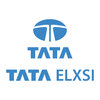


i
Persistent
Systems
Work with us
![]()
Filter interviews by
Persistent Systems React Js Frontend Developer Interview Questions and Answers
Persistent Systems React Js Frontend Developer Interview Experiences
2 interviews found
I appeared for an interview in Feb 2025.
(2 Questions)
- Q1. Flat an array without using flat in Js
- Ans.
Flattening an array involves converting a multi-dimensional array into a single-dimensional array without using the flat method.
Use reduce: You can use the reduce method to iterate through the array and concatenate elements. Example: `arr.reduce((acc, val) => acc.concat(val), [])`.
Use recursion: Create a function that checks if an element is an array and flattens it recursively. Example: `function flatten(arr) { ret...
- Q2. Code a counter without using useState?
- Ans.
Implementing a counter in React without useState can be achieved using refs for mutable state management.
Using useRef: You can create a mutable reference using useRef to store the counter value, which persists across renders.
Example: const countRef = useRef(0); to initialize the counter.
Updating the Counter: Use a function to increment the value, e.g., countRef.current += 1; to update the counter.
Triggering Re-renders:...
(1 Question)
- Q1. Make an api call and store data and pass using context api
- Ans.
Using Context API to manage API data in a React application.
Create a Context using React.createContext().
Build a Provider component that fetches data from an API.
Use useEffect to make the API call when the component mounts.
Store the fetched data in a state variable using useState.
Pass the data and any necessary functions through the Provider's value.
Consume the context in child components using useContext.
I applied via LinkedIn and was interviewed in Jun 2024. There was 1 interview round.
(3 Questions)
- Q1. Dom manipulation and React hooks
- Q2. Use call back in depth
- Ans.
Callbacks are functions passed as arguments to another function to be executed later
Callbacks are commonly used in event handling, asynchronous programming, and functional programming
Callbacks can be synchronous or asynchronous
Example: passing a callback function to a setTimeout() function
- Q3. Promises based coding question
Interview Preparation Tips
What people are saying about Persistent Systems





Interview questions from similar companies

I applied via Naukri.com and was interviewed before Sep 2019. There were 6 interview rounds.
Interview Questionnaire
3 Questions
- Q1. IQ Test
- Q2. Machine Test
- Q3. Face To Face
Interview Preparation Tips
1. IQ Test
2. Machine Test
3. Face to Face
IQ Test is not so tough but prepare well Machine Test
Machine Test Question are like :-
Q.1 - We declare a variable in C++ like "is_this_a_variable" and in Java like "IsThisAVariable". There is underscore in between every word and first alphabet of every word is in lowercase in C++ and in Java first alphabet is in capital without underscore. Create a program in which if user input a string in a C++ variable format it will convert the input in java variable format.
Q2. Count the frequency of a string.
user input string - pqhphi
output-
p - 2
q - 1
h - 2
i - 1
Be strong in algorithms and data structure.

Interview Questionnaire
1 Question
- Q1. All about SQL joins,data warehouse.
Interview Preparation Tips

I appeared for an interview before Aug 2016.
Interview Preparation Tips
Experience: There were questions on basics of programming and general questions on verbal,reasoning and quantitative.
Tips: Time will be short to answer all so keep watch on time
Round: Group Discussion
Experience: They segregated us in to batches and in our team there were 10 members.
Tips: Easy round
Duration: 15 minutes
Round: Telephonic
Experience: They tested my communication skill in that round
College Name: Dhanalakshmi college of engineering

Interview Questionnaire
13 Questions
- Q1. Indroduce yourself ?
- Ans.
I am a software developer with experience in various programming languages and frameworks.
Proficient in Java, C++, and Python
Familiar with web development using HTML, CSS, and JavaScript
Experience with database management systems such as MySQL and MongoDB
Strong problem-solving and analytical skills
Worked on projects involving machine learning and artificial intelligence
- Q2. Difference between method overloading and methode overriding ?
- Ans.
Method overloading is having multiple methods with the same name but different parameters. Method overriding is having a subclass method with the same name and parameters as a superclass method.
Method overloading is used to provide different ways of calling the same method with different parameters.
Method overriding is used to provide a specific implementation of a method in a subclass that is already defined in the su...
- Q3. Difference between switch case and if else statement?
- Ans.
Switch case is used for multiple conditions while if else is used for binary conditions.
Switch case is faster than if else for multiple conditions.
If else can handle complex conditions while switch case cannot.
Switch case can only compare values of the same data type.
If else can handle null values while switch case cannot.
Example: switch (day) { case 1: console.log('Monday'); break; case 2: console.log('Tuesday'); brea...
- Q4. What is interface and abstract class?
- Ans.
Interface and abstract class are both used for abstraction in object-oriented programming.
An interface is a collection of abstract methods that define a contract for a class to implement.
An abstract class is a class that cannot be instantiated and may contain abstract methods.
Interfaces are used to achieve multiple inheritance in Java.
Abstract classes can have non-abstract methods and instance variables.
An example of a...
- Q5. Whats is polymorphisom?
- Ans.
Polymorphism is the ability of an object to take on many forms.
It allows objects of different classes to be treated as if they were objects of the same class.
It is achieved through method overriding and method overloading.
Example: A shape class can have multiple subclasses like circle, square, etc. and all can be treated as shapes.
Example: A method can have different implementations in different classes but with the sa...
- Q6. What is inherritance ?
- Ans.
Inheritance is a mechanism in object-oriented programming where a new class is created by inheriting properties of an existing class.
Inheritance allows code reusability and saves time and effort in writing new code.
The existing class is called the parent or base class, and the new class is called the child or derived class.
The child class inherits all the properties and methods of the parent class and can also add its ...
- Q7. Default case in switch case
- Ans.
Default case in switch case statement
Default case is executed when no other case matches the switch expression
It is optional and can be placed anywhere in the switch statement
It is often used to handle unexpected input or errors
It should always be the last case in the switch statement
- Q8. Introduce yourself apart from resume?
- Ans.
I am a passionate software developer with a strong background in web development and a love for problem-solving.
Experienced in HTML, CSS, JavaScript, and various web development frameworks
Proficient in backend development using languages like Java, Python, and Node.js
Familiar with database management systems such as MySQL and MongoDB
Strong problem-solving skills and ability to work well in a team environment
- Q9. What is your weaknesses ?
- Ans.
I tend to get overly focused on details, which can sometimes slow down my progress.
I have a tendency to spend too much time on perfecting small details
I sometimes struggle with prioritizing tasks due to my focus on details
I am working on improving my time management skills to balance detail-oriented work with efficiency
- Q10. Do you have any offer from any other company ?
- Ans.
Yes, I have received offers from two other companies.
Received offers from Company A and Company B
Currently evaluating all offers to make an informed decision
Considering factors like company culture, growth opportunities, and compensation
- Q11. Which company would you like to join apart from sapient ?
- Ans.
I would like to join Google because of their innovative projects and work culture.
Google is known for its cutting-edge technology and innovative projects.
They have a strong focus on employee well-being and work-life balance.
Google offers opportunities for career growth and development.
The company has a diverse and inclusive work culture.
Google is a leader in the tech industry with a global presence.
- Q12. Have you ever worked in a team?
- Ans.
Yes, I have worked in multiple teams in various projects.
Worked in a team of developers to create a new software application
Collaborated with designers, testers, and project managers to meet project deadlines
Participated in daily stand-up meetings to discuss progress and roadblocks
- Q13. 8 metals bolls are similar ?
- Ans.
Yes, they are similar.
All 8 metal balls are of the same material.
They have the same size and weight.
They have the same physical properties.
They are interchangeable in any given situation.
Interview Preparation Tips
Skills evaluated in this interview

Interview Questionnaire
11 Questions
- Q1. What is the difference between C and C++?
- Ans.
C++ is an extension of C with object-oriented programming features.
C++ supports classes and objects while C does not.
C++ has better support for polymorphism and inheritance.
C++ has a standard template library (STL) which C does not have.
C++ allows function overloading while C does not.
C++ has exception handling while C does not.
- Q2. What is the difference between for and while loop?
- Ans.
For loop is used for iterating over a sequence while while loop is used for iterating until a condition is met.
For loop is used when the number of iterations is known beforehand
While loop is used when the number of iterations is not known beforehand
For loop is faster than while loop for iterating over a sequence
While loop is useful for iterating until a specific condition is met
For loop can be used with range() functio...
- Q3. Write a program to add two numbers without using + operator
- Q4. How to you reverse a string without using any looping and inbuilt functions?
- Ans.
To reverse a string without using any looping and inbuilt functions, we can use recursion.
Create a function that takes a string as input.
If the length of the string is 0 or 1, return the string.
Otherwise, call the function recursively with the substring starting from the second character and concatenate the first character at the end.
Return the reversed string.
Example: reverseString('hello') returns 'olleh'.
- Q5. How many queues will you use to implement a priority queue?
- Ans.
A priority queue can be implemented using a single queue or multiple queues.
One approach is to use a single queue and assign priorities to elements using a separate data structure.
Another approach is to use multiple queues, each representing a different priority level.
For example, if there are three priority levels, three queues can be used to implement the priority queue.
- Q6. Which datastructure would you use to implement an heteregenous array?
- Ans.
An array of objects can be used to implement a heterogeneous array.
Each element in the array can be an object that represents a different data type.
The objects can have different properties and methods based on their respective data types.
For example, an element can be an object representing a string with a 'value' property and a 'length' method.
- Q7. Tell me about yourself?
- Q8. Describe your project?
- Ans.
Developed a web-based inventory management system for a retail company.
Used HTML, CSS, and JavaScript for the front-end development.
Implemented a RESTful API using Node.js and Express for the back-end.
Utilized a MySQL database to store and manage inventory data.
Implemented features like product search, order management, and reporting.
Ensured data security and user authentication using encryption and JWT.
Collaborated wi...
- Q9. You are given a match-box and two candles of equal size, which can burn 1 hour each. You have to measure 90 minutes with these candles. (There is no scale or clock). How do you do?
- Q10. You have 8 balls which are identical(completely). You are given a weighing scale. How many times would you measure to get the odd ball out?
- Q11. Three friends rent a room for Rs.30 by paying Rs.10 each. The owner decides to give them a discount Rs.5 and gives it to the broker. The broker who a cunning man takes Rs.2. and returns one rupee to each ...
- Ans.
The missing rupee is not actually missing. The calculation is misleading and does not account for the total amount paid.
The initial amount paid by each person was Rs.10, totaling Rs.30.
The owner gave them a discount of Rs.5, so they paid Rs.25 in total.
The broker took Rs.2, leaving them with Rs.23.
When the broker returned Rs.1 to each person, they each received Rs.1 back, totaling Rs.3.
So, the total amount paid by the ...
Interview Preparation Tips
Experience: Let me share my interview process with Sapient. As I did not find any helpful papers before attending interview.The initial test was amcat test, which consisted of aptitude, english comprehension(which was annoying because they ask a lot of unknown word meanings), C and C++ basic concepts. I cleared that test.
Round: Technical Interview
Experience: There are 2 interviews round
1) Technical
2) HR
General Tips: Bond: 1.5 yearEligibility Criteria : Greater than 6.5 CGPA
Skills: C++, Java, Algorithm
College Name: NA
Motivation: Sapient, Trust me it’s an awesome company .Be strong in technical area.
Skills evaluated in this interview

Interview Questionnaire
13 Questions
- Q1. Inheritence in java?
- Ans.
Inheritance in Java allows a class to inherit properties and methods from another class.
Inheritance is achieved using the 'extends' keyword.
The class that is being inherited from is called the superclass or parent class.
The class that inherits from the superclass is called the subclass or child class.
Subclasses can access the public and protected members of the superclass.
Inheritance promotes code reusability and allow...
- Q2. Overloading and Overridding?
- Q3. WAP to check if no is palindrom or not?
- Ans.
A program to check if a given number is a palindrome or not.
Convert the number to a string.
Reverse the string and compare it with the original string.
If they are equal, the number is a palindrome.
If not, the number is not a palindrome.
- Q4. Primary key and Composite key?
- Q5. Normalisation?
- Ans.
Normalisation is the process of organizing data in a database to reduce redundancy and improve data integrity.
It involves breaking down a table into smaller tables and defining relationships between them.
Normalization helps to eliminate data inconsistencies and anomalies.
There are different levels of normalization, with each level having specific rules to follow.
For example, first normal form (1NF) requires that each t...
- Q6. Without lifting the pen meet 9 point arranged in squre of 3×3, using 4 lines?
- Q7. If I am ready to relocate anywhere in India or Outside upon company needs
- Ans.
Yes, I am ready to relocate anywhere in India or outside upon company needs.
I am open to exploring new locations and cultures.
I understand that relocation may be necessary for career growth and opportunities.
I am adaptable and willing to adjust to new environments.
I have experience working in diverse teams and can easily integrate into new settings.
- Q8. If I am ready to accept a project in Java, if Sapient had trained you in DotNet earlier
- Ans.
I would be ready to accept a project in Java even if I was trained in DotNet earlier.
I have a strong foundation in programming principles and concepts, which can be applied to any language.
I am confident in my ability to quickly learn and adapt to new technologies.
I have experience working with multiple programming languages and frameworks.
I can leverage my knowledge of DotNet to understand similar concepts in Java.
I a...
- Q9. Why I want to join Sapient
- Ans.
I want to join Sapient because of its reputation for innovative projects and collaborative work environment.
Sapient is known for working on cutting-edge projects that push the boundaries of technology
I value the collaborative work environment at Sapient, where team members support each other to achieve success
I am impressed by Sapient's commitment to professional development and growth opportunities for employees
- Q10. My Expectations from Sapient
- Ans.
My expectations from Sapient
I expect Sapient to provide a challenging and innovative work environment
I expect Sapient to offer opportunities for professional growth and learning
I expect Sapient to have a collaborative and supportive team culture
I expect Sapient to provide competitive compensation and benefits
I expect Sapient to have a strong focus on quality and delivering excellent software solutions
- Q11. What is Counter Strike. ( I mentioned winning a couple of gaming events in my Resume)
- Q12. What is Trading/Stocks/Exchange. (I had shown my interest in these things by mentioning the development of DalalStreet website by me)
- Q13. What are you proud of apart from your website DalalStreet and a few more
Interview Preparation Tips
Experience: Vendor based online test consisting of 4 sections – Maths, Logical Reasoning, English and Technical(C/C++/DS/Debugging based Questions). This includes Sectional CutOff as well.
Round: Technical Interview
Experience: Another One on One Interview. Technical Questions on Languages/DataBases and Projects/Internships mentioned by you in your Resume. Lots of Puzzles.
In my case the Interviewer asked me questions on Database(3-4 queries),PHP,HTML,CSS,Internship,C/C++ Basics. Also I had 4 puzzles.
Round: HR Interview
Experience: Key : Just be yourself and be Confident in whatever you say. Show your eagerness to learn things (even if you don’t want to ). If you don’t know anything, Confidently speak up you don’t know. They hardly care, they only see if you are willing to learn.
General Tips: I would add here that SGM is majorly into developing Trading application. SGM – GlobalMarketInstitute would provide you with 6 months of training in technology(Java/DotNet) and Finance(Share/Exchange/Equities etc), which would be a great experience. Hence a knowledge and interest in Share Trading stuff is highly appreciated if you plan to grow your career in Sapient Global Markets.(Bond Agreement of 1.5 years which includes 6 months of Training Period)
Skills: PHP, Databases, C++, Java, .NET
College Name: MNIT Jaipur
Skills evaluated in this interview

Interview Preparation Tips
Experience: Technical sections had questions from almost all the sections through AMCAT(C, C++, DBMS, DS, OS)(level :moderate)Quantitative aptitude’s questions were good.. All were almost of R. S. Aggarwal level though few exceptions were there tooLogical reasoning and verbal ability was good.. Some questions were tough.
Round: HR Interview
Experience: Overall enjoyed. But not selected because of my less market knowledge.
College Name: NA

Software Developer Interview Questions & Answers
Publicis Sapientposted on 16 Aug 2015
Interview Questionnaire
4 Questions
- Q1. Explain Network Layers?
- Ans.
Network layers are a hierarchical way of organizing communication protocols.
Network layers provide a modular approach to networking.
Each layer has a specific function and communicates with adjacent layers.
The OSI model has 7 layers, while the TCP/IP model has 4 layers.
Examples of layers include the physical layer, data link layer, network layer, transport layer, and application layer.
- Q2. What is a Dead Lock?
- Ans.
Deadlock is a situation where two or more processes are unable to proceed because they are waiting for each other to release resources.
Occurs in multi-threaded/multi-process environments
Can lead to system freeze or crash
Prevention techniques include resource ordering and timeouts
Example: Process A holds resource X and waits for resource Y, while Process B holds resource Y and waits for resource X
- Q3. Explain Paging and Segmentation
- Ans.
Paging and Segmentation are memory management techniques used by operating systems.
Paging divides memory into fixed-size pages and stores them in physical memory.
Segmentation divides memory into logical segments and stores them in physical memory.
Paging allows for efficient use of physical memory and reduces fragmentation.
Segmentation allows for protection and sharing of memory between processes.
Examples of operating s...
- Q4. Pirates of different ages have a treasure of 100 gold coins. On their ship, they decide to split the coins using this scheme: The oldest pirate proposes how to share the coins, the OTHER pirates (not inc...
Interview Preparation Tips
Experience: It would quite a simple test, covering basic questions from general mathematics and algebra
Tips: Practice "Aptitude" on daily basis
Round: Technical Interview
Experience: Technical Interview in sapient will be quite related to understand of your basic concepts. The round also includes Puzzles. Try Practising some random puzzles from internet.
Tips: Be active and Interactive. Even, if you do not know the answer, try explaining your approach. That would get you marks.
Round: HR Interview
Experience: The HR carries larger wait-age in Sapient. Do not panic. He will give you enough time to settle down by asking background questions. He will only try to analyse the kind of person you are. Be true to yourself and your are sure to be successful
Skills: Basic Concepts of Launguages, Operating System, Networks
College Name: NIT JALANDHAR
Skills evaluated in this interview
Persistent Systems Interview FAQs
Tell us how to improve this page.
Persistent Systems Interviews By Designations
- Persistent Systems Software Engineer Interview Questions
- Persistent Systems Senior Software Engineer Interview Questions
- Persistent Systems Lead Engineer Interview Questions
- Persistent Systems Software Developer Interview Questions
- Persistent Systems Lead Software Engineer Interview Questions
- Persistent Systems Project Lead Interview Questions
- Persistent Systems Java Developer Interview Questions
- Persistent Systems Salesforce Developer Interview Questions
- Show more
Interview Questions for Popular Designations
- Software Developer Interview Questions
- Front end Developer Interview Questions
- Web Developer Interview Questions
- Senior Software Developer Interview Questions
- Junior Software Developer Interview Questions
- UI Developer Interview Questions
- Angular Frontend Developer Interview Questions
- Angular Developer Interview Questions
- Show more
Overall Interview Experience Rating
based on 2 interview experiences
Difficulty level
Duration
React Js Frontend Developer Interview Questions from Similar Companies
Persistent Systems React Js Frontend Developer Reviews and Ratings
based on 1 review
Rating in categories
|
Software Engineer
4.6k
salaries
| ₹4.7 L/yr - ₹11.1 L/yr |
|
Senior Software Engineer
4.6k
salaries
| ₹6.8 L/yr - ₹18.6 L/yr |
|
Lead Software Engineer
3.6k
salaries
| ₹9.5 L/yr - ₹17.2 L/yr |
|
Lead Engineer
3.5k
salaries
| ₹13.7 L/yr - ₹25 L/yr |
|
Project Lead
2.2k
salaries
| ₹21.2 L/yr - ₹39.3 L/yr |

Cognizant

TCS

IBM

LTIMindtree
- Home >
- Interviews >
- Persistent Systems Interview Questions













